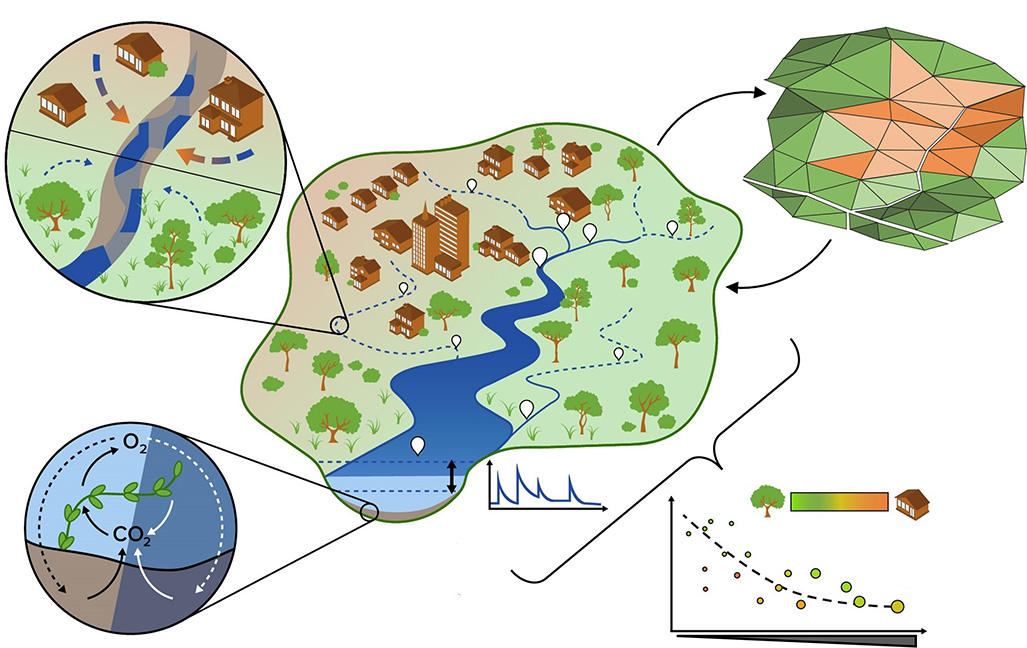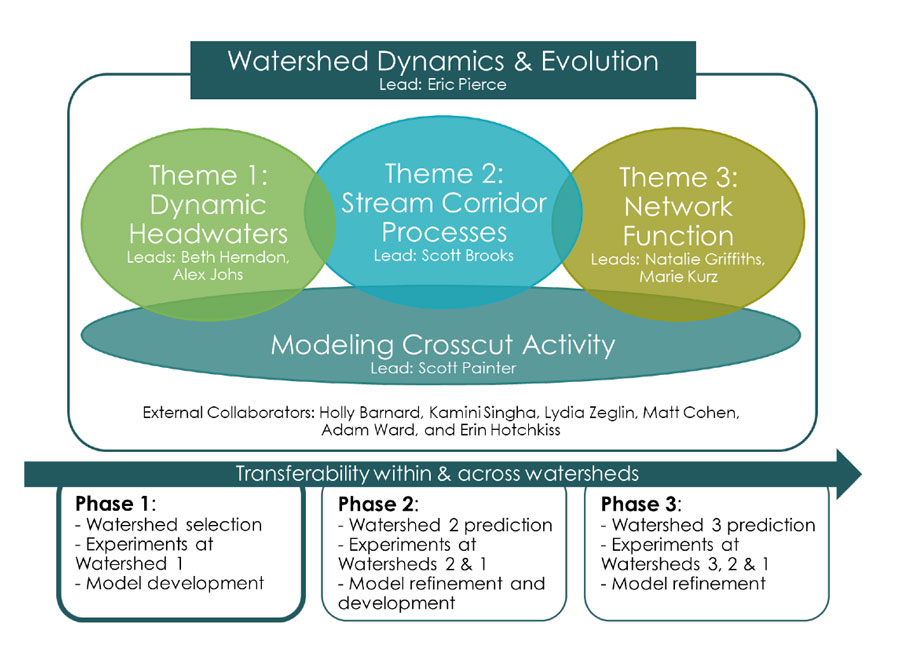WaDE: Watershed Dynamics and Evolution
Science Focus Area
Science Focus Area
We do not understand if and how or at what scale land cover influences the generation and export of water and solutes from the landscape to the stream network and how this affects local and emergent hydro-biogeochemical function within the stream network.
We do not fully understand what controls upland–stream interactions and how these interactions vary under different hydrologic regimes and land covers.
We have an incomplete understanding of how measures of stream function, such as stream metabolism, integrate complex watershed properties that vary in space and time.
Existing observational networks are skewed to higher-order streams and underrepresent low- to mid-order streams.
The watershed science community has largely focused on end-member systems—forested, agricultural, and highly urbanized—and we currently lack sufficient observations in watersheds with heterogeneous land cover.
Model predictions of watershed function at basin- or continental United States–scales are uncertain because our mechanistic understanding of how key processes depend on land cover and hydrologic regimes is incomplete.
Over the next 9 years, Oak Ridge National Laboratory’s Watershed Dynamics and Evolution (WaDE) Science Focus Area (SFA) seeks to advance predictive understanding of how dominant processes controlling watershed hydro-biogeochemical function operate under a range of hydrologic regimes and vary along stream networks that drain heterogeneous land covers.
To advance watershed science, it is necessary to develop a systematic framework that explicitly links local physical–chemical–biological heterogeneity to larger spatial organization. Research efforts over the next 9 years will be on three watersheds, studied in succession, with the goal of systematically translating, applying, and refining the process understanding and modeling capabilities we gain from a specific watershed to increasingly disparate systems.
All three watersheds will be of similar mid-order size, with heterogeneous land cover, and located in areas experiencing rapid land cover change within the Tennessee River Basin.

Research Foci. Conceptualization of 9-year research foci needed to support transferable understanding of watershed hydro-biogeochemical function within and across stream networks that drain heterogeneous land covers: non-perennial dynamics, contributions to stream metabolism, network-scale emergent behaviors, and responses to hydrologic events.

Science Focus Area (SFA) Organization. 9-year organization and progression of the Watershed Dynamics and Evolution SFA.
The WaDE SFA is organized around three integrated research themes and a crosscutting modeling activity that together create a multiscale, model–observation–experiment framework to enable hypothesis-driven research addressing the knowledge gaps.
Collectively, this framework will advance a deeper, predictive understanding of the hydro-biogeochemical processes and feedbacks that control solute mobilization and export from headwater catchments with heterogeneous land cover (Theme 1), resultant feedbacks between flow, solute concentrations, and stream function in stream corridors (Theme 2), and the emergent patterns in stream metabolism at network scales (Theme 3).
How do dynamic flow conditions in non-perennial streams control water and solute export from headwater catchments with varied land cover, and how do these processes influence downstream chemistry and metabolism?
What are the relative contributions of different stream compartments and microbial communities to stream metabolism, and how and why do these contributions vary in response to land cover, season, and hydrologic events?
How do the heterogeneity and resiliency of stream metabolism vary in space and time in relation to position along the stream network, land cover, and hydrologic events?
What is the minimum set of watershed attributes required to predict stream hydro-biogeochemical function at local to network scales? Do these attributes support transferability to other stream networks and hydrologic regimes?